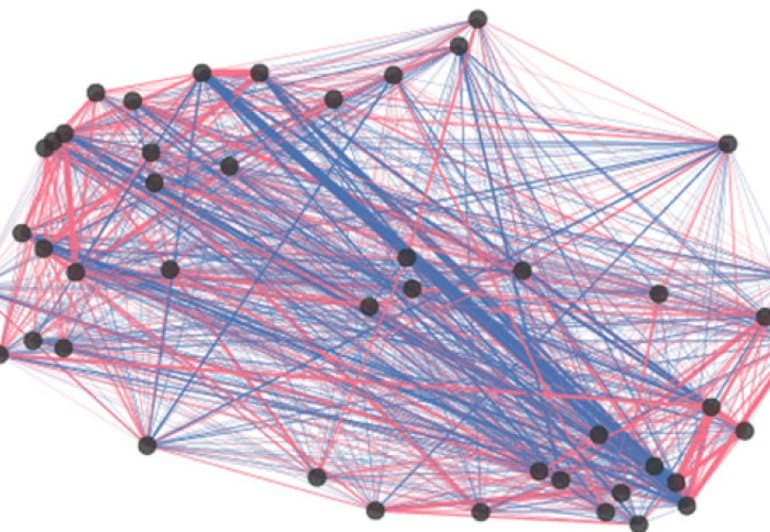Summary: Researchers map how the structure of existing memories is reorganized in the brain as new experiences are committed to memory.
Source: Imperial College London
Oxford and Imperial researchers have mapped how the structure of existing memories is reorganized as new experiences are committed to memory in mice.
They found that brain architecture is sophisticated enough to integrate new information while allowing new and old memories to interact, rather than having to forget old experiences to make room for new ones.
In a study published in Nature Neuroscience, the team from the University of Oxford and Imperial College London devised an experiment using graph theory – mathematical structures that model relationships between objects – to study how mice integrate memories.
They set up a task in which mice learned that a particular compartment in a new environment contained sugar. The mice also explored a familiar environment before and after forming this new association between particular places and reward.
This allowed the scientists to observe how the laying down of the new memory affected the patterns of co-activity among neurons in the hippocampus, a brain area that plays a major role in learning and memory. They found that the network structure describing the patterns of coordinated neuron firing (co-activity) that occur when old memories are recalled in the hippocampus changed as the mice embedded new memories.
The team also found that during learning, the patterns of co-activity among neurons unfolded along particular directions in the ‘neuronal activity space’. This showed that ‘newness’, spatial location, and reward experience were key factors involved in the process of integrating new memories. They also discovered that high-activity cells formed the core of each memory, while low-activity cells contributed to the patterns of co-activity ‘on demand’ throughout behavioural events, in order to segregate individual experiences.

This finding highlights an important division of labour among hippocampal neurons. Lead researcher Professor David Dupret at the University of Oxford said: “This research sheds new light on the network mechanisms underlying the continual storage and recall of multiple memories in the hippocampus. Neuroscientists are now implementing new methods, such as in vivo imaging, to monitor large-scale neuronal populations over days and weeks of learning experience, to understand more about this process.”
The research gives us a new way to look at the network mechanisms underlying the storage and recall of multiple memories in the hippocampus. Study co-author Professor Simon Schultz from Imperial’s Department of Bioengineering said: “This research highlights the value of an interdisciplinary approach to understanding the brain – by viewing memory from an engineering and mathematical point of view, we were able to tease out insights that would not have been possible based on a traditional approach to the study of memory.”
Neuroscientists are now designing and probing new ways of monitoring large-scale neuronal networks over time, and are also interested in the effect of ageing on the way new memories are stored.
Funding: This research was funded by the Medical Research Council and the Engineering and Physical Sciences Research Council.
About this memory research news
Source: Imperial College London
Contact: Caroline Brogan – Imperial College London
Image: The image is credited to Giuseppe P. Gava et al
Original Research: Closed access.
“Integrating new memories into the hippocampal network activity space” by Giuseppe P. Gava et al. Nature Neuroscience
Abstract
Integrating new memories into the hippocampal network activity space
By investigating the topology of neuronal co-activity, we found that mnemonic information spans multiple operational axes in the mouse hippocampus network. High-activity principal cells form the core of each memory along a first axis, segregating spatial contexts and novelty. Low-activity cells join co-activity motifs across behavioral events and enable their crosstalk along two other axes. This reveals an organizational principle for continuous integration and interaction of hippocampal memories.






